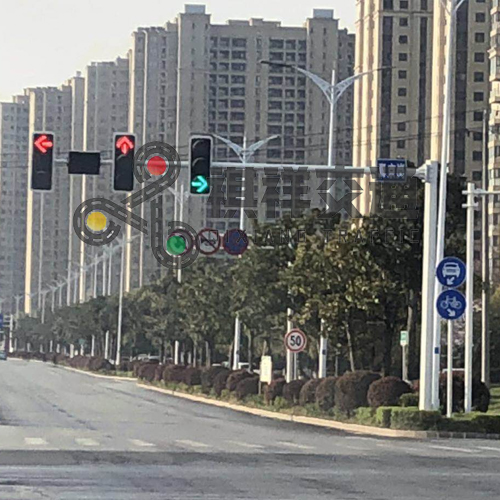In traffic management and urban planning, traffic light poles play a vital role in ensuring the smooth flow of vehicles and pedestrians on the road. These poles are typically made from galvanized steel, making them a popular choice due to their durability and corrosion resistance. However, the thickness of the zinc coating on these poles can significantly affect their performance and longevity. In this article, we’ll explore the impact thickness has on galvanized traffic light poles and why it’s an important consideration for city planners and traffic authorities.
The thickness of galvanized traffic light poles directly affects their ability to resist corrosion and withstand environmental wear. Galvanizing is the process of applying a protective layer of zinc to steel to prevent rust and corrosion. The thickness of this coating is measured in microns and is directly related to the life and performance of the rod.
First and foremost, thicker galvanized coatings provide better protection against corrosion. In areas with high humidity, exposure to salt water, or harsh weather conditions such as extreme heat or cold, a thicker galvanized coating can effectively protect steel from the elements. Corrosion can weaken the structural integrity of utility poles, potentially leading to safety hazards and the need for expensive repairs or replacements. Therefore, the thickness of galvanized traffic light poles is a key factor in determining the overall service life of the traffic light pole.
In addition, the thickness of galvanized traffic light poles will also affect the appearance of the traffic light pole. Over time, exposure to the elements can cause zinc coatings to degrade and lose their luster. A thicker galvanized coating will better maintain the appearance of the pole, maintaining its visual appeal and avoiding the need for frequent touch-ups or repaints. This is especially important in urban areas, where aesthetic considerations are crucial to maintaining a clean and attractive streetscape.
Additionally, the thickness of the galvanizing layer affects the impact resistance of the rod. Traffic light poles are vulnerable to accidental vehicle collisions, vandalism, and other forms of physical impact. A thicker galvanized coating can provide an extra layer of protection, reducing the chance of dents, bends, or other forms of damage. This in turn contributes to the overall safety and reliability of traffic light poles.
In addition to protecting the steel from corrosion and physical damage, the thickness of the galvanizing layer also affects the overall cost of maintenance and replacement. Thicker galvanized coatings require less frequent maintenance and refinishing, saving time and resources for city planners and traffic authorities. Additionally, longer-lasting traffic light poles mean fewer expenses associated with replacement and repairs, making them a cost-effective option in the long run.
It should be noted that the thickness of galvanized traffic light poles should be carefully selected according to the specific environment and usage conditions of the traffic light pole installation location. Factors such as climate, proximity to the coast, and traffic volume should be considered when determining the appropriate galvanizing thickness. Consulting with a professional engineer or galvanizing expert can ensure that the coating thickness selected meets the specific requirements of the installation site.
In conclusion, the thickness of the galvanized coating on a traffic light pole has a significant impact on its performance, longevity, and overall cost-effectiveness. Thicker galvanized coatings offer many benefits to city planners and traffic management agencies by providing better corrosion protection, maintaining an attractive appearance, increasing impact resistance, and reducing maintenance and replacement costs. Therefore, the thickness of the galvanized coating must be carefully considered when selecting traffic light poles for installation in cities and suburbs.
For specific information about the thickness of galvanized traffic light poles, please contact the galvanized traffic light pole manufacturer Qixiang for detailed specifications.
Post time: Feb-05-2024







